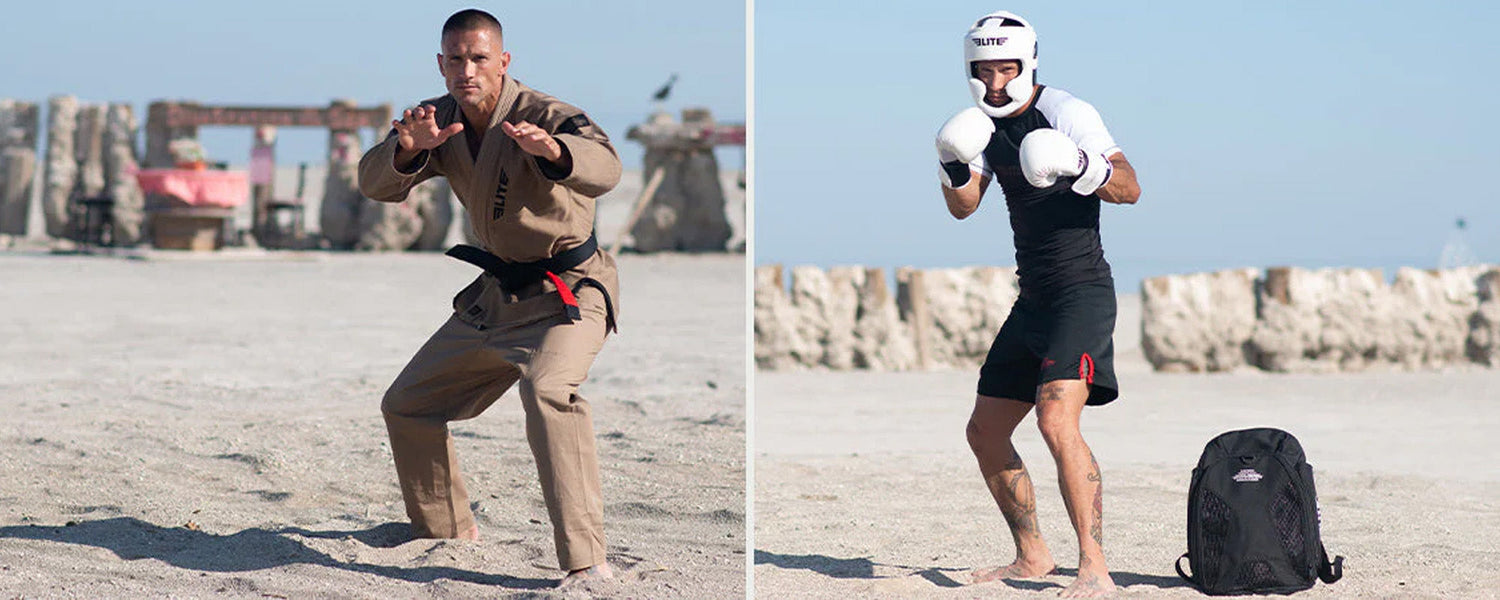Table of content
Among more than 190 martial arts, a select few share a few similarities, while others follow different principles. Usually, martial artists start their careers learning one martial art before transitioning to another. Many legendary fighters train in more than one martial art to expand their range of techniques.
Learning more than one martial art is not impossible but can be a difficult task. Training in two martial arts at once can slow your progress and make it hard to separate between techniques. However, learning more than one martial art can help you combine the best aspects of multiple martial arts.
1. Is it Possible to Learn Two Martial Arts at the Same Time?
In general, most people can learn three to five martial arts in their lifetimes. Only students who have become experts in at least one martial art should attempt to add another to their skill sets. Beginners should start with only one martial art. After training for two to three years, then they can start training in another martial art.
2. Is it Beneficial to Learn Two Martial Arts at the Same Time?
Learning two martial arts at a time is most beneficial for experts of at least one fighting style. Beginners who just started martial arts might be overwhelmed trying to understand two martial arts at once.
Martial artists who have become familiar with every technique in at least one fighting style can keep their bodies strong and conditioned and prevent them from getting into a training rut.
3. Why Learn Two Martial Arts at a Time?
Many professional fighters, including UFC competitors, have training in more than one martial art. Having a versatile skillset will help make it easier to overcome opponents. Reasons why fighters train in more than one martial art include the following:
3.1. Stronger Base
Training in another martial art will help you adjust your fighting style, making your base fighting style stronger and improving your proficiency.
3.2. Strengthen Your Muscles
Training in more than one martial art can help you work every major muscle group in your body, especially those given less emphasis on one fighting style. Strengthening your muscles can also help you better control your opponent’s movements.
3.3. Learn Different Techniques and Fighting Styles
Training in more than martial art can help you create a fighting style that best suits your preferences. As you practice and compare techniques between martial arts, you can pick the ones that appeal most to you and can perform without issue.
3.4. Helps You Be Well-Rounded
Elite fighters, such as MMA veterans, are well-rounded because they have expertise in almost every fighting style, including grappling, striking, or boxing.
Training in two martial arts can help you become a well-rounded fighter. During a fight, you can use techniques from another style to defend yourself if your opponent is currently countering your base fighting style.
3.5. Overcome Your Training Rut
A training rut is when you stick to the same fitness routine, causing your progress to stagnate. A training rut happens most often to experts with a base fighting style. Training in more than one martial art provides new challenges for fighters to overcome and can help them get out of a training rut.
4. Drawbacks of Training in Two Martial Arts
While martial arts training can have physical and mental health benefits, training in more than one martial art can have drawbacks:
- Training in two martial arts requires more physical exertion and requires more time.
- Training in two martial arts can reduce the speed of your progress.
- Training in two martial arts can confuse the practitioner due to the differences between styles.
- Training in two martial arts can make for a difficult schedule since the practitioner has to attend multiple classes.
5. Tips to Learn Two Martial Arts at a Time Efficiently
Listed below are tips on how to learn multiple martial arts efficiently:
5.1. Master One Martial Art Before Starting Another
Martial arts training requires a lot of workouts and training sessions. For beginners, it takes time for their bodies to adapt to such intense routines. It can take almost ten years or longer for a fighter to master just one fighting style. It is best to start learning a different martial art after achieving mastery over at least a single fighting style.
5.2. Try Not to Confuse the Two Martial Arts
Despite the vast diversity of martial arts, there are fighting styles that closely resemble each other. However, every fighting style has a different place of origin and unique techniques to help differentiate them.
A fighter trying to learn two different martial arts simultaneously must be able to identify any differences between them. Applying techniques from a martial art during a sparring match involving a different martial arts can cause confusion for your training partner.
5.3. Choose Martial Arts with Similarities
It is easier to learn two martial arts that have similar techniques and follow the same principles. For instance, Brazilian Jiu-Jitsu (BJJ) and judo are both martial arts that involve grappling and require wearing a uniform (gi or kimono) to train.
Learning similar martial arts can help a competitor reach a higher skill level in less time than trying to learn techniques from widely different martial arts. Martial arts that include techniques that are alike can make it easier for competitors to perform them all effectively.
5.4. Mixed Martial Arts Training
Mixed martial arts training is more knowledge-based and skill-oriented than learning one or two martial arts. Mixed martial arts training involves a broader learning process compared to the limited distinction of learning one or two martial arts.
6. Best Martial Arts Combinations
Listed below are martial arts combinations that best complement each other and ensure steady progress in learning two fighting styles.
6.1. Brazilian Jiu-Jitsu and Judo
Brazilian Jiu-Jitsu and judo share many similarities, including being derivatives of Japanese Jiu-Jitsu. Mitsuyo Maeda is credited as the man who brought judo to Brazil.
The Gracie family took inspiration from judo to create their own fighting style, Brazilian Jiu-Jitsu. Due to originating from the same martial art, judo, and BJJ share many similarities.
Various BJJ legends started their careers by learning judo before transitioning to BJJ, including Roberto Satoshi, Lucas Lepri, and Luciana Mo.
6.2. Brazilian Jiu-Jitsu and Boxing
Brazilian Jiu-Jitsu and boxing could not be more different from each other, with BJJ focusing on grappling and boxing having an emphasis on punches. However, they both teach practitioners to control their opponents’ movements. Rafael Lovato Junior started his martial arts career with boxing before transitioning to BJJ.
6.3. Brazilian Jiu-Jitsu and Muay Thai
BJJ is a grappling martial art, while Muay Thai focuses on striking. Despite being opposites, BJJ and Muay Thai can offer a versatile fighting style with access to various techniques that can cover each other’s weaknesses. Amanda Magda, a BJJ black belt and world champion, started her martial arts career learning Muay Thai before adding BJJ to her skillset.
6.4. Brazilian Jiu-Jitsu and Taekwondo
Brazilian Jiu-Jitsu and Taekwondo offer a variety of techniques that will help strengthen all the major muscle groups and improve your defensive skills. Giancarlo Bodoni is a BJJ black belt who started his martial arts career by learning Taekwondo before also learning BJJ.
6.5. Brazilian Jiu-Jitsu and MMA
Various MMA fighters have competed in BJJ tournaments, while many BJJ fighters have participated in MMA competitions. Many MMA fighters learned BJJ techniques to improve their skills since BJJ techniques helped them overcome opponents of all sizes. Examples of BJJ legends who have been in MMA competitions include Roger Gracie, Ronaldo Souza, and Romulo Barral.
7. Final Words
Knowing more than one martial art is an appealing idea to many fighters. This has influenced many professional combatants to improve upon their base fighting styles by incorporating another martial art. Cross-training can help them learn new techniques and improve their offense and defense.
But training to learn more than one martial art is not easy. If you struggle to attend training sessions for both martial arts, it can reduce the rate of your progress. Learning one martial art at a time can result in practitioners getting into a training rut, while learning two martial arts at a time can confuse beginners.
It is best for beginners to stick with only one martial art. But training in another martial art at the same time can be beneficial if you are familiar with your base martial art.












Leave a comment
This site is protected by hCaptcha and the hCaptcha Privacy Policy and Terms of Service apply.